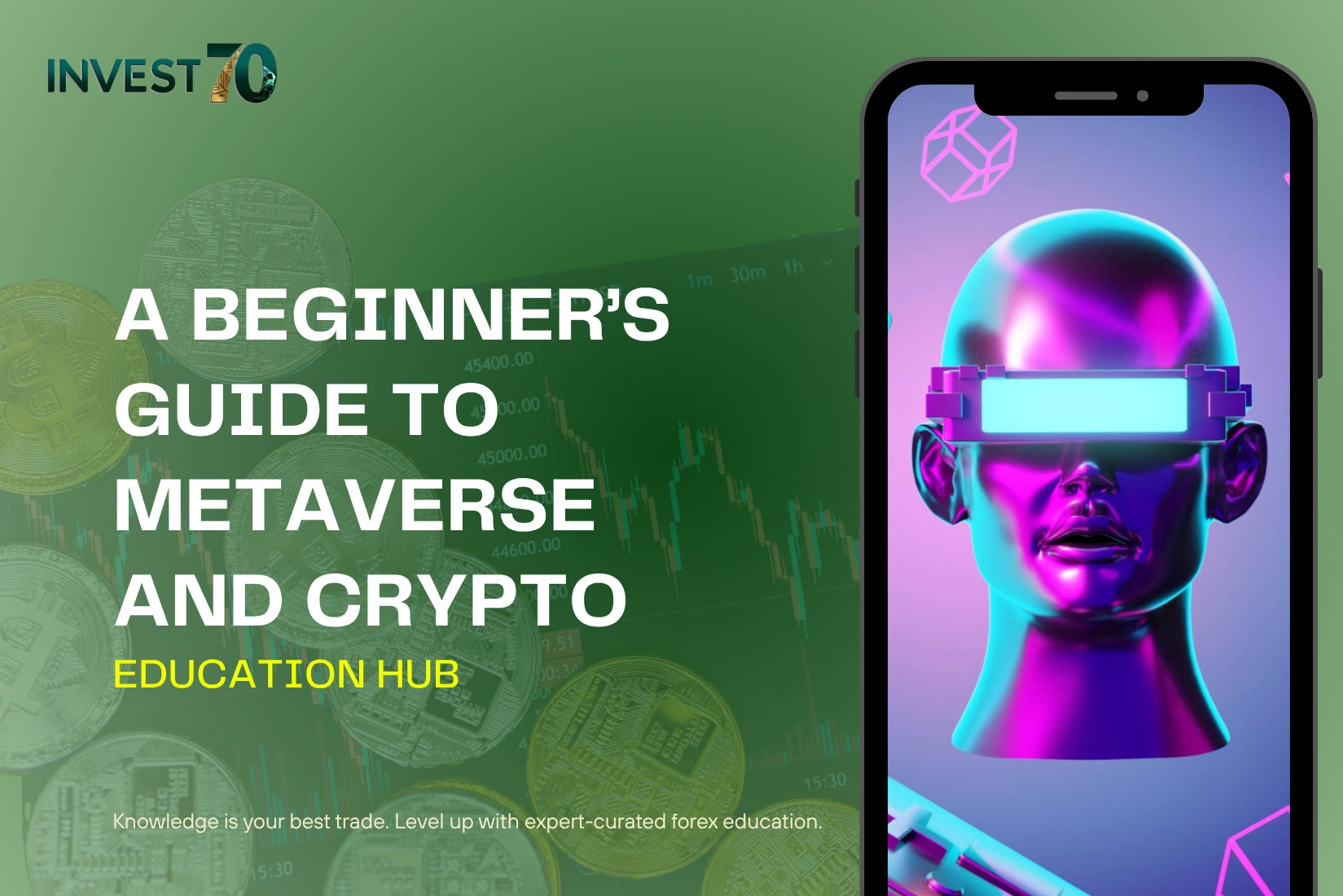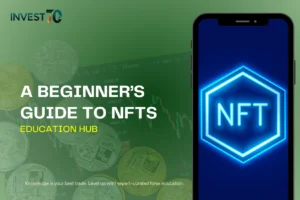Metaverse and Crypto: A Beginner’s Look into the Virtual Economy Revolution
The term metaverse and crypto might sound like science fiction at first glance — a blend of futuristic technology and digital money. But if you’ve heard about people buying land in a game, collecting digital fashion, or investing in virtual assets using cryptocurrency, you’ve already seen this concept in action.
The metaverse refers to shared digital spaces where users interact with each other, with virtual environments, and with digital objects. It’s more than just video games or VR headsets — it’s a new way to create, socialize, and trade. Meanwhile, cryptocurrency and blockchain provide the tools to make these worlds more open, secure, and economically functional.
Understanding the Basics: What Is the Metaverse in Crypto?
In simple terms, the metaverse in crypto is a collection of virtual worlds built on blockchain infrastructure. These platforms allow people to buy digital land, use tokens for goods and services, and truly own their in-game items through cryptographic proofs.
Unlike traditional games or online spaces controlled by large companies, decentralized metaverse platforms give more power to users. You’re not just playing in a world — you might own part of it, vote on how it evolves, or even build your own business within it.
This is where crypto becomes essential. Without a blockchain-based system to handle ownership, transactions, and governance, these virtual environments would remain centralized and limited.
The Role of Blockchain in the Metaverse
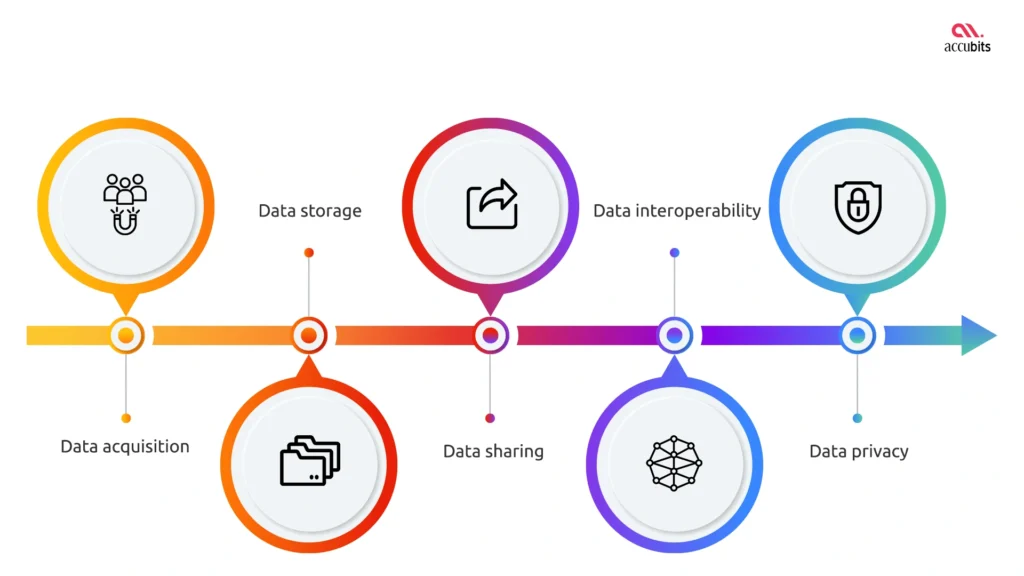
Credit from Accubits Blog
Blockchain acts as the underlying engine that keeps the metaverse secure, transparent, and decentralized. It verifies ownership of assets, facilitates peer-to-peer transactions, and ensures that digital goods cannot be duplicated or faked.
A blockchain metaverse typically includes:
- Digital Identity: Verified through crypto wallets, users can own their avatars, items, or even login credentials.
- Smart Contracts: Automated programs that execute specific actions when conditions are met — such as renting out digital land.
- NFTs (Non-Fungible Tokens): Unique digital items stored on the blockchain — from artwork to virtual buildings.
- Native Tokens: Each platform may have its own currency, like $MANA or $SAND, used for in-world purchases.
Table: Comparing Traditional Online Worlds vs. Crypto-Based Metaverses
| Feature | Traditional Virtual World | Crypto-Based Metaverse |
|---|---|---|
| Ownership | Centralized (owned by platform) | Decentralized (user owns via NFTs) |
| Currency | In-game credits | Blockchain tokens |
| Interoperability | Usually isolated | Can integrate across platforms |
| Monetization | Limited (via platform rules) | Open (sell NFTs, stake tokens, etc.) |
| Governance | Company-controlled | Community governance (via DAOs) |
How Crypto Enables Real Ownership in Virtual Spaces
When you buy a digital jacket for your avatar or purchase land in a virtual city, how do you prove it’s yours? In traditional games, it’s simply stored in your user account, and the company can take it away at any time. But in the crypto metaverse, ownership is recorded on the blockchain. No one can alter it, and you can sell or transfer it just like a physical item.
This is where metaverse NFT integration plays a key role. Each asset, whether it’s a character skin or a music file, is tied to a unique token on the blockchain. This enables the emergence of crypto-based virtual economies, where digital labor and creativity can generate real-world income.
Examples of Metaverse Crypto Use Cases
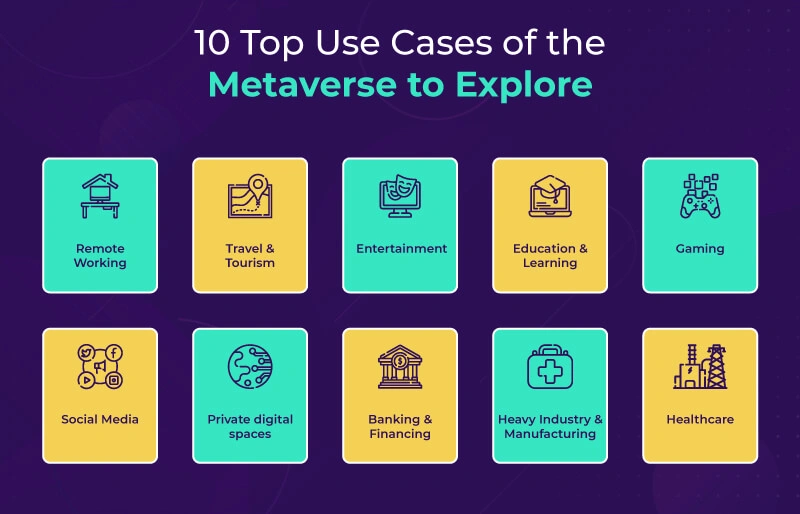
Credit from Blockchain Development Company
Across various platforms, crypto is being used to:
- Buy and sell virtual land (e.g., Decentraland, The Sandbox)
- Create and sell NFTs as in-world items or collectibles
- Play games that reward tokens (also known as crypto gaming in the metaverse)
- Attend virtual concerts or meetings with ticket access granted through NFTs
- Participate in decentralized organizations to vote on platform changes
Some users even rent out their metaverse land to advertisers or event organizers, creating new income streams. These activities are all enabled by smart contracts and crypto tokens.
Exploring Metaverse Crypto Tokens and Coin Projects
Most metaverse platforms run on native cryptocurrencies or tokens. These tokens serve as both utility and investment assets, depending on how the platform is built.
Common examples include:
- $MANA (used in Decentraland)
- $SAND (used in The Sandbox)
- $APE (tied to the Otherside metaverse by Yuga Labs)
- $ILV (Illuvium’s gaming token)
- $AXS (Axie Infinity’s ecosystem token)
These metaverse crypto coins can often be traded on popular crypto exchanges and used in their respective ecosystems to buy assets or vote in community proposals.
How to Invest in Metaverse Crypto Safely
If you’re interested in participating, there are several ways to get involved:
- Buy Metaverse Tokens: Start by researching and purchasing crypto tokens associated with popular platforms. Always use reliable exchanges and wallets.
- Own Virtual Land or Assets: Browse NFT marketplaces where land, avatars, or items are listed. Verify authenticity before purchasing.
- Join a Decentralized Platform: Some metaverse communities allow you to stake tokens or participate in governance to shape their future.
- Use a Metaverse Crypto Wallet: Tools like MetaMask, Phantom, or Trust Wallet are essential to storing and interacting with your digital assets.
Just like any investment, it’s important to understand the risks. Prices can be volatile, and some projects may not deliver on their promises. Always perform due diligence.
Crypto Gaming, Creativity, and Earning Potential
One of the most exciting elements of the metaverse is its ability to reward creativity. Artists can design digital clothes or architecture and sell them as NFTs. Developers can build games inside these worlds, and players can earn tokens through gameplay.
In this way, the metaverse becomes more than just a 3D environment — it turns into a crypto-powered creator economy.
Games like The Sandbox, Illuvium, and Big Time offer interactive ways to earn and build. With time, we might see architects, musicians, and educators establish full-fledged businesses inside virtual spaces.
What Lies Ahead: The Future of Metaverse and Crypto
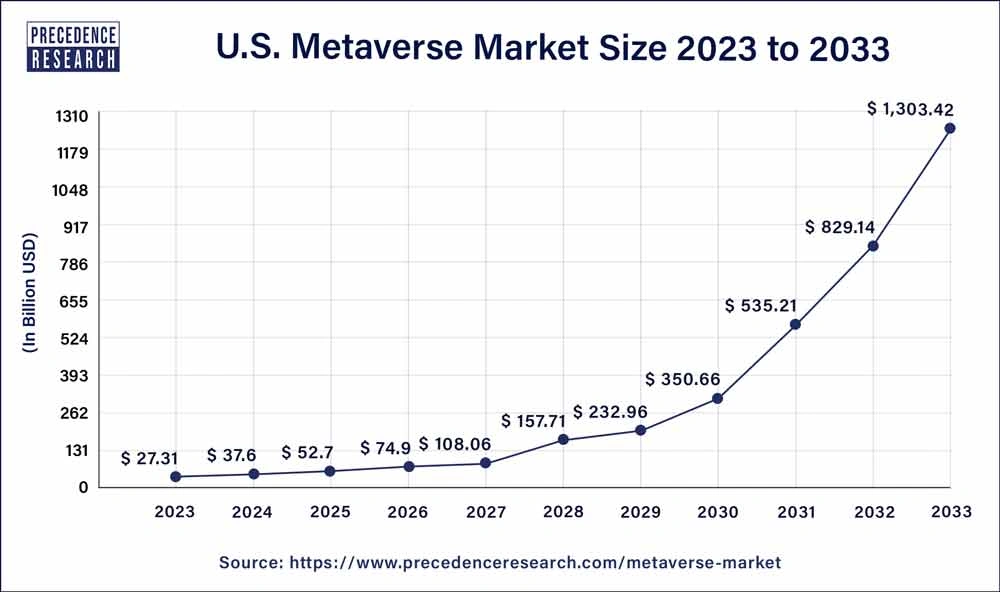
Credit from Precedence Research
The metaverse is still in development. Many platforms are experimenting with different models, and real-world adoption remains uneven. However, the foundation being laid — decentralized ownership, token-based economies, and open access — hints at a major shift.
In the future, we might see:
- Virtual real estate agencies
- Schools and training centers in VR
- Digital marketplaces replacing websites
- Cross-platform metaverse passports powered by wallets
While challenges like privacy, regulation, and scalability remain, the combined force of metaverse and crypto is building a future where virtual life carries real value — socially, creatively, and economically.
Conclusion: Why the Metaverse and Crypto Matter
As digital and physical worlds continue to merge, the role of metaverse and crypto will only grow more significant. These technologies are not only transforming how we entertain ourselves but also how we earn, interact, and participate in society.
For beginners, it may seem complex — but at its core, it’s about making virtual spaces more open, more personal, and more valuable to those who use them.
If the internet was about access, the metaverse may be about ownership. And in this next phase, crypto is the key to unlocking that potential.

